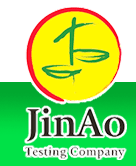In the run up to the expiry of quota restrictions that had long regulated much of global trade in textiles and clothing, many a pundit predicted widespread recourse to anti-dumping actions.
WTO rules permit action to offset the injurious effect of dumping. Yet the apprehension was that given the protection enjoyed by textile industries in quota-imposing countries, it was difficult to see the entrenched interests giving up and that, therefore, the abolition of quotas might give rise to increased anti-dumping actions.
Institutions like the IMF/World Bank also weighed in, suggesting that ��the back loading of effective liberalization under the Agreement on Textiles and Clothing �� raises concerns that political pressures might spark greater recourse to other forms of protection once quotas are phased out, with trade remedy actions [such as antidumping] becoming a new line of defense��¹.
To avoid the spectre, ITCB asked for a two-year grace period after the elimination of quotas, in which no antidumping actions shall be initiated so that trade could adjust to normal trading conditions.
The problem in perspective
ITCB worries were grounded on experience with some highly politicized actions by the European Union (E.U.). In those instances, by merely provoking the initiation of investigations, substantial harm was caused to the targeted countries�� trade interests². Table 1 showing shares enjoyed by affected countries in European Union imports before and after the initiation of those actions is illustrative of the problem. Notice the sharp drop in affected countries�� shares, especially for cotton fabrics.
Table 1 Targeted Countries�� Import Shares Before and After Anti-Dumping Actions
|
Product
|
Before AD action
|
Following AD action
|
After termination of AD action
|
|
Synthetic fabrics
|
|
Value
|
50.24%
|
52.89%
|
56.53%
|
|
Volume
|
66.64%
|
63.57%
|
70.44%
|
|
Cotton fabrics
|
|
Value
|
55.83%
|
38.58%
|
42.36%
|
|
Volume
|
59.04%
|
37.60%
|
40.44%
|
|
Bed linen
|
|
Value
|
49.00%
|
47.56%
|
41.31%
|
|
Volume
|
51.84%
|
50.90%
|
44.65%
|
Fortunately, the predicted doomsday scenario did not occur; which is not, however, to say that the problem has faded away. If anything, it has assumed an added dimension inasmuch as more and more countries are taking recourse to anti-dumping actions raising concerns about their propriety.
Current state of anti-dumping actions in the sector
But what is the current state of anti-dumping actions on textiles and clothing, and how does it sit vis-��-vis the apprehensions noted earlier?
A snapshot of cases involving investigations into alleged dumping of textile and clothing products in 2008 and the actual anti-dumping measures in force during the year are provided in Tables 2 and 3 below.
Table 2 Anti-Dumping Investigations on Textiles and Clothing Products in 2008
|
Applying Member
|
Fibres
|
Yarns
|
Fabrics
|
Made-Ups
|
Apparel
|
Total
|
|
Brazil
|
2
|
6
|
-
|
1
|
-
|
9
|
|
Turkey
|
-
|
-
|
6
|
-
|
-
|
6
|
|
Argentina
|
-
|
6
|
-
|
-
|
-
|
6
|
|
China
|
5
|
-
|
-
|
-
|
-
|
5
|
|
India
|
1
|
3
|
-
|
-
|
-
|
4
|
|
Republic of Korea
|
-
|
2
|
-
|
-
|
-
|
2
|
|
Ukraine
|
-
|
-
|
-
|
2
|
-
|
2
|
|
Pakistan
|
1
|
-
|
-
|
-
|
-
|
1
|
|
Total
|
9
|
17
|
6
|
3
|
-
|
35
|
Table 3 Anti-Dumping Measures on Textiles and Clothing Products in force in 2008
|
Applying Member
|
Fibres
|
Yarns
|
Fabrics
|
Made-Ups
|
Apparel
|
Total
|
|
Turkey
|
8
|
13
|
10
|
3
|
-
|
34
|
|
India
|
5
|
17
|
3
|
-
|
-
|
25
|
|
Pakistan
|
4
|
4
|
-
|
-
|
-
|
8
|
|
Peru
|
-
|
-
|
7
|
-
|
-
|
7
|
|
European Union
|
4
|
-
|
1
|
2
|
-
|
7
|
|
Brazil
|
3
|
2
|
-
|
2
|
-
|
7
|
|
United States
|
3
|
-
|
<< Return |
|


















